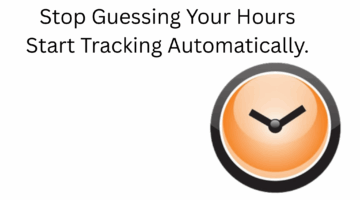 It is now June, and the Supreme Court still has not issued a decision on whether to uphold the Department of Education’s plan to forgive up to $20,000 in federal student loans. Those who made less than $125,000 per year in either 2020 or 2021 will be eligible to have $10,000 of their federal student loans forgiven. Those who received Pell Grants will be eligible for $20,000 in forgiveness.
It is now June, and the Supreme Court still has not issued a decision on whether to uphold the Department of Education’s plan to forgive up to $20,000 in federal student loans. Those who made less than $125,000 per year in either 2020 or 2021 will be eligible to have $10,000 of their federal student loans forgiven. Those who received Pell Grants will be eligible for $20,000 in forgiveness.
The forgiveness plan was first proposed last summer, which suggests that this was a political stunt to influence the 2022 midterm elections.
How the court will rule is not certain. Commentators believe that the majority Republican-appointed justices are expected to rule that the political and economic significance of the forgiveness plan requires congressional approval. On the other hand, some justices seem to question whether the plaintiffs have standing to sue. All parties seem to agree that a federal loan servicer is in a better position to sue as they will suffer enough harm to establish standing. But none have stepped up.

How Innovative Legal Teams Are Turning AI From Promise To Practice
In recent years, AI has moved beyond speculation in the legal industry. What used to be hypothetical is now very real.
Several other factors can influence the court’s decision. Recently, both houses of Congress narrowly passed a bill that would repeal the loan forgiveness plan. The votes were mostly on party lines. President Biden has stated that he will veto the bill, and there are not enough votes to overturn it. While the bill has no chance of becoming law, it could send a signal on the issue to the court.
For example, several justices seem to understand the crushing burden of student loans. Some have placed significant sums of money into college savings accounts. Justice Clarence Thomas wrote about the role student loans played in his own financial struggles.
The fact that no decision has been made until now might suggest that the court will rule against forgiveness. If they were to rule to uphold it, the Court would have issued its opinion earlier as debtors will be happy and are more likely to accept the transition back into repayment. Issuing its opinion later would give debtors more time to prepare for the inevitable. The recently passed debt ceiling extension bill effectively codifies the repayment start date, which is sometime in September.
The Court has established its legal rationale for whatever it decides on this issue. But behind the legality is the question of fairness where Congress is better suited to decide. Is the potential unfairness enough to justify striking down the forgiveness plan?

Chrometa: Turning Time Into Billable Value For Modern Lawyers
Adoption of Chrometa represents more than a technological upgrade; it reflects a professional philosophy that values accuracy, transparency, and efficiency.
First, let’s address the elephant in the room. Loan forgiveness is unfair to those who paid their loans in full either on their own or through their parents who saved because they could have used that money for their retirement, other investments, or just to enjoy themselves. These people deserve the utmost and unconditional respect but instead they are ignored, patronized, or are shamed for being financially prudent or for their so-called privilege.
Also, people need to stop claiming that student loans should be forgiven because the government forgave those who received Paycheck Protection Program or PPP loans. PPP loans were designed from the outset to be forgiven if the funds were used for a specific purpose — mainly to pay employees who would otherwise have been laid off. Some people got up to over $20,000 in free money out of this but that is how it was designed in response to the pandemic. PPP loans are more analogous to the PSLF program where federal loans are forgiven if the borrower spent 10 years working in public service jobs.
With that being said, let’s look at fairness from a different perspective. These days, $10,000 or $20,000 is a lot of money, but that alone will not pay off most people’s loans. Many who advocate for loan forgiveness say it is not enough.
On one end, there are those who paid off their student loans and will not get a refund. As stated above, it is unfair to them. But those who paid off their loans have benefits and a sense of accomplishment. Their delayed gratification now provides them more financial freedom. The interest payments they don’t have to pay likely exceeds the forgiveness amount. And can one put a price on peace of mind?
But on the other, extreme end, there are those with hundreds of thousands of dollars in loans and their monthly discretionary income is not enough to even pay the interest. These people will be on an income-based repayment plan for up to 20 years. Even if they get the $20,000 loan forgiveness, they are likely to still make the same monthly payments until their loans are forgiven in full at the end of their IBR period.
In most cases, the current loan forgiveness proposal will provide the greatest benefit to those who have low student loan balances. And who are likely to have low student loan balances? Those who lived within their means and did not overborrow. Those who got scholarships and skillfully negotiated tuition discounts.
The Supreme Court should decide on the student loan issue as soon as possible to end this saga and continue getting back to normal. While many will question the fairness of forgiveness, the size of the forgiveness amount suggests that it will mostly benefit those who maintained low student loan balances by being financially responsible.
Steven Chung is a tax attorney in Los Angeles, California. He helps people with basic tax planning and resolve tax disputes. He is also sympathetic to people with large student loans. He can be reached via email at [email protected]. Or you can connect with him on Twitter (@stevenchung) and connect with him on LinkedIn.